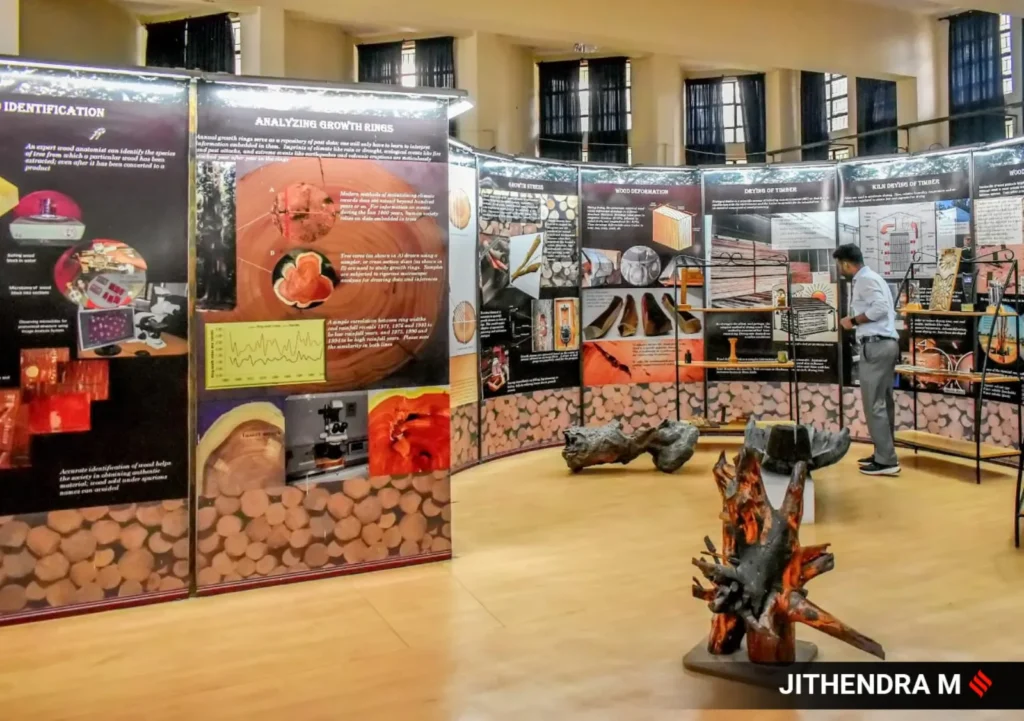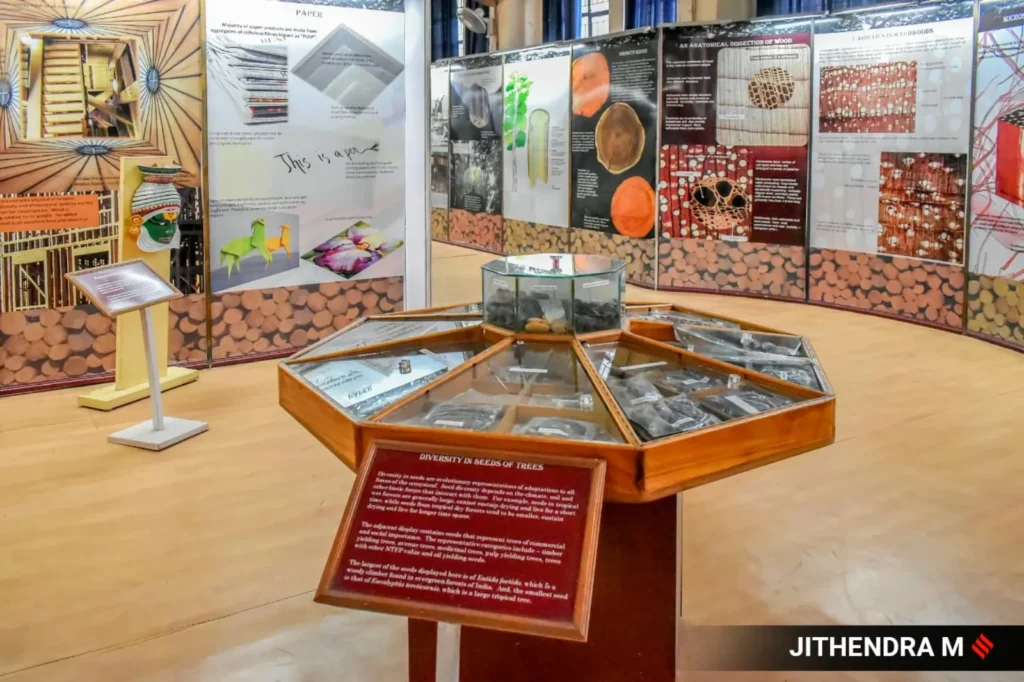The Rich Tapestry of Woodworking in Bengaluru
Bengaluru, often heralded as India’s Silicon Valley, has roots that delve deep into the rich soil of tradition, one of which is the intricate and fascinating history of woodworking. This city’s woodworking heritage is a vivid mosaic of skill, artistry, and cultural significance, telling tales of craftsmanship that has been passed down through generations.
Craftsmanship Par Excellence
At the heart of Bengaluru’s woodworking history is the sheer diversity of wood types utilized – from the sturdy and versatile Rosewood and Teak, famed for their durability and natural beauty, to the softer, yet equally charming, varieties like Mango and Jackfruit wood. Artisans in Bengaluru have long mastered the art of molding these varied materials into objects of both utility and beauty, ranging from ornate furniture and decorative panels to intricate toys and religious idols.
Timeless Techniques and Modern Adaptations
What’s truly remarkable about Bengaluru’s woodworking scene is how it has embraced change without letting go of tradition. Techniques that have been honed over centuries, such as inlay work, joinery, and lacquering, continue to thrive, adapted by contemporary craftsmen to suit modern aesthetics and needs. This blend of the old with the new adds a unique dimension to Bengaluru’s woodworking products, making them sought after both locally and internationally.
A Community Effort
Woodworking in Bengaluru isn’t just about the artisans and their craft; it’s also about the community that supports this art form. From the local markets that provide a platform for these masterpieces to be showcased and sold, to the families that have kept the tradition alive by passing down skills and secrets from one generation to the next, woodworking in Bengaluru is a testament to the city’s communal spirit and love for its heritage.
In summary, Bengaluru’s history of woodworking is not merely a chapter from the past. It’s a living, evolving story that continues to fascinate and inspire. As we wander through the bustling markets of the city, admire the elegance of handcrafted furniture, or cherish the warmth of a wooden toy, we’re experiencing a piece of Bengaluru’s heart and soul – a testament to the enduring legacy of its woodworking traditions.
Exploring Rare and Exotic Wood Species
When we delve into the world of woodworking, furniture making, or even crafting musical instruments, the allure of rare and exotic wood species can’t be overstated. These woods, known for their unique colors, textures, and sometimes even scents, bring an unparalleled level of sophistication and uniqueness to any project.
Purpleheart Wood, hailing from Central and South America, is renowned for its striking purple hue, which deepens with exposure to sunlight. Its durability and resistance to insect attack make it a favorite among woodworkers for both decorative and functional pieces.
Another gem in the realm of woodworking is Ebony, prized for its deep, lustrous black color. Found in West African and South Asian rainforests, Ebony is dense enough to sink in water and is perfect for creating high-end musical instruments and ornate furniture.
For those seeking a wood with a story, Ancient Kauri from New Zealand is a spectacular choice. Estimated to be over 50,000 years old, this wood is extracted from prehistoric forests buried under the ground and preserved in peat bogs. The tones and patterns in Kauri wood are as unique as its history, offering a connection to the ancient world.
Let’s not forget about Bocote, a visually striking wood from Mexico and Central/South America, known for its dramatic zebra-like patterns. Bocote is as durable as it is beautiful, making it an excellent choice for both small decorative projects and large pieces of furniture.
Exploring these rare and exotic wood species not only enriches our understanding of nature’s diversity but also opens up new realms of creativity in woodworking. Each piece of wood tells a story, and incorporating these unique materials into your projects can create truly one-of-a-kind creations that are as rich in history as they are in beauty.

Interactive Exhibits and Demonstrations: Engage, Learn, and Experience
Interactive exhibits and demonstrations take the traditional museum experience to a whole new level. Unlike passive observation, these dynamic experiences invite you to engage directly with the material, making learning both fun and memorable. From science centers to art galleries, interactive elements are reshaping how we explore and understand the world around us.
Why Go Interactive?
- Engagement: Interactive exhibits require direct participation, making the experience more engaging and personal. Whether it’s manipulating a science experiment or contributing to a live art installation, you’re not just a spectator—you’re a participant.
- Education: These exhibits often present complex concepts in intuitive ways. For example, a hands-on science demonstration can illuminate abstract principles, making them easier to grasp.
- Entertainment: Let’s face it—interactivity adds an element of fun. It’s one thing to read about history or science; it’s another to experience it through a simulation or game.
What to Expect
When visiting an interactive exhibit, expect a variety of activities:
- Hands-on Demonstrations: Conduct experiments, build structures, or create art pieces. These are especially popular in science museums and children’s museums.
- Simulations: Flight simulators or virtual reality (VR) experiences can transport you to other worlds or historical periods.
- Participatory Art: Some art exhibitions invite you to become part of the artwork, whether through digital interaction or physical manipulation.
- Q&A Sessions: Live demonstrations often include a Q&A segment, offering deeper insights and facilitating discussion.
Making the Most of Your Visit
To fully enjoy an interactive exhibit or demonstration:
- Be Curious: Don’t be afraid to ask questions or participate in discussions. Curiosity enhances the experience.
- Take Your Time: Interactive exhibits are best enjoyed without rushing. Allow yourself to fully immerse and explore.
- Follow Instructions: Some exhibits have specific guidelines to ensure safety and enjoyment for everyone. Paying attention ensures a smooth experience for all involved.
Interactive exhibits and demonstrations are revolutionizing the way we learn about and interact with the world. Whether you’re a history buff, art enthusiast, or science geek, these immersive experiences offer something for everyone, combining education, engagement, and entertainment in unique and innovative ways. Next time you visit a museum or gallery, seek out these interactive opportunities to enrich your experience.
Unveiling the Artistry in Woodworking Techniques
Delving into the world of woodworking reveals an intricate tapestry of skills and methods that transform a simple piece of wood into a masterpiece. From the seasoned professional to the enthusiastic hobbyist, each project begins with selecting the right type of wood. Hardwoods like oak and maple are prized for their durability, while softer woods such as pine lend themselves to more intricate carving techniques.
One fundamental technique in the woodworker’s repertoire is jointing. Craftsmanship shines through in the creation of dovetail joints, known for their resistance to being pulled apart and the aesthetic appeal they add to pieces like drawer corners. Similarly, the mortise and tenon joint, a mainstay in woodworking, emphasizes strength and precision, essential in creating lasting furniture.
Sanding and finishing are the final, crucial steps in elevating the project. Sanding smooths the wood, preparing it for finishing touches that not only protect but highlight the natural beauty of the wood grain. Techniques vary from simple hand-rubbed oils to intricate French polishing, each selection strategically enhancing the final project’s durability and visual appeal.
In the realm of woodworking, every technique, from the selection of the wood to the final polish, tells a part of the story. It’s not just about creating something from wood but infusing life and character into the material. Whether it’s through the precision of a joint or the gloss of a finish, the artistry behind woodworking techniques is a testament to the craftsperson’s dedication to their art.
The Timeless Appeal of Artistic Wood Carvings and Sculptures
Artistic wood carvings and sculptures carry with them a timeless allure that transcends generations. These pieces, imbued with the warmth and natural beauty of wood, offer a unique aesthetic that captivates and delights. Whether it’s a meticulously detailed figurine or a bold, abstract sculpture, each piece tells a story, reflecting not only the artist’s vision but also the intrinsic qualities of the wood itself.
What makes wood carvings and sculptures so special? Firstly, the material. Wood, with its diverse textures and shades, lends itself to a vast array of artistic expressions. From the dark, rich tones of mahogany to the light, airy feel of bamboo, each type of wood influences the overall impact of the artwork.
Secondly, the process of creating these artworks is a testament to the skill and patience of the artists. Carving wood is a delicate endeavor, requiring years of practice to master. Artists must understand the intricacies of their medium, working with the grain to bring their visions to life in a way that highlights the natural beauty of the wood.
Moreover, wood sculptures and carvings evoke a sense of connection to nature and history. Many cultures have a rich tradition of wood art, from the intricate masks of Africa to the elegant woodblock prints of Japan. Collectors and enthusiasts appreciate these pieces not only for their aesthetic value but also for the stories they tell and the traditions they preserve.
In a world increasingly dominated by digital and mass-produced art, wooden sculptures and carvings stand out for their craftsmanship and the palpable sense of time and effort invested in them. They remind us of the beauty of the handmade and the enduring appeal of natural materials.
Whether you’re an avid collector or simply someone who appreciates the finer things in life, the world of artistic wood carvings and sculptures offers a vast, intriguing canvas. These pieces invite us to slow down, appreciate the meticulous craftsmanship, and revel in the unique beauty that only wood can offer.

Harnessing the Art of Traditional Woodcraft in Bengaluru
In the vibrant city of Bengaluru, amidst the modern hustle, lies an invaluable treasure trove of traditional woodcraft. This centuries-old practice, deeply ingrained in Karnataka’s cultural heritage, beautifully captures the essence of creativity, sustainability, and meticulous craftsmanship.
Why Preserving Traditional Woodcraft Matters
Traditional woodcraft in Bengaluru is not merely about carving wood into everyday objects. It’s a detailed storytelling medium, where artisans breathe life into wood, transforming it into intricate art pieces, majestic furniture, and religious idols, each narrating a unique tale of mystery, mythology, and folklore. Preserving this art form means keeping alive the stories and traditions of our ancestors, promoting biodiversity through the sustainable use of local wood species, and fostering a sense of community and cultural identity.
Challenges and Endeavors
Despite its rich cultural significance, traditional woodcraft faces challenges in today’s rapidly modernizing world. The relentless competition from mass-produced items, coupled with dwindling interest among the younger generation, poses a substantial threat to its survival.
However, hope is far from lost. Numerous initiatives undertaken by both government and private sectors, aimed at revitalizing this age-old art, are making significant strides. Workshops and exhibitions are held regularly to showcase the sublime beauty and intricate artistry involved in woodcraft, sparking interest and admiration amongst locals and tourists alike. Moreover, encouraging the use of eco-friendly and sustainable practices among artisans not only contributes to environmental conservation but also adds a unique value proposition to their creations.
In conclusion, the journey to preserve traditional woodcraft in Bengaluru is more than just safeguarding a craft; it’s about cherishing and passing on a legacy. By supporting local artisans, opting for handcrafted over factory-made, and spreading awareness, we contribute to a movement that reveres the past while nurturing the future. In doing so, we ensure that this exquisite art form continues to thrive, mesmerizing and inspiring generations to come.
Unleash Your Creativity with Woodworking Workshops and Classes
Embarking on a woodworking journey can be both an intensely rewarding and creatively liberating experience. Whether you’re a complete novice with the ambition to learn the basics or an intermediate crafter aiming to polish your skills, woodworking workshops and classes offer a comprehensive learning environment that’s hard to beat.
Why Attend a Woodworking Class?
Firstly, these classes provide hands-on learning with direct feedback from experienced instructors, a valuable resource for mastering intricate techniques that are difficult to grasp through online tutorials or books. Moreover, you’ll find yourself in a community of like-minded individuals, fostering an atmosphere where ideas, skills, and inspiration are freely exchanged.
What to Expect in a Workshop
Workshops are typically structured around a specific project or set of techniques, ranging from crafting small decorative items to building furniture or learning specialized joinery. Classes might cover:
- Basic woodworking safety and tool usage
- Material selection and preparation
- Measuring, marking, and planning projects
- Cutting, shaping, and assembly techniques
- Finishing touches that elevate your work
“The greatest joy comes not from the finished product but from the process of creation.”
This quote encapsulates the essence of joining a woodworking class — it’s about embracing the journey of creation, making mistakes, learning, and eventually, evolving as a craftsman. Plus, the satisfaction of holding something tangible that you’ve made with your own hands is unparalleled.
Classes are available for all skill levels and can be found in local community centers, vocational schools, and specialized woodworking stores. Some may offer a series of sessions while others might host one-off workshops for creating a specific project.
Choosing to enroll in a woodworking workshop or class not only sharpens your skills but also connects you with a supportive community. It’s an investment in yourself, your craft, and a step towards mastering the art of woodworking.
Remember, every master was once a beginner. It’s never too late to start your woodworking journey.
This section aims to capture the essence and benefits of engaging in woodworking workshops and classes, appealing to individuals eager to explore their creative potential through the art of woodworking.
Embracing the Future of Woodworking: A Blend of Innovation and Sustainability
Woodworking, an age-old craft, is steering towards an exciting future characterized by remarkable innovation and a steadfast commitment to sustainability. As we delve into this transformative era, it becomes clear that the essence of woodworking is not just in the preservation of traditional techniques but also in the integration of modern technologies and eco-friendly practices.
At the heart of this evolution is the adoption of digital fabrication methods, such as CNC routers and 3D printing, which have opened up new possibilities for precision, efficiency, and complexity in woodworking projects. These technologies not only augment the creative potential of woodworkers but also contribute to reducing waste by optimizing material usage.
Sustainability, a pivotal concern, is being addressed through the use of reclaimed wood and materials from sustainably managed forests. This not only helps in conserving the environment but also instills a unique character and story in each piece created. Moreover, advancements in wood treatment and finishing processes are increasingly favoring non-toxic, low-VOC (volatile organic compounds) options, enhancing both environmental and indoor air quality.
Collaborative spaces and online platforms have also emerged as vital components in the woodworking community, fostering a culture of knowledge sharing, inspiration, and innovation. These forums are instrumental in spreading awareness about sustainable practices and providing resources for learning and experimentation.
In essence, the future of woodworking is a confluence of tradition and innovation—a journey towards creating more with less, driven by a collective ethos of responsibility towards the planet. As we embrace these changes, woodworking is not just about crafting with wood but also about making a positive impact on the world around us, making each creation a testament to a more sustainable future.
